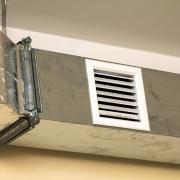How Often Should Air Ducts Be Cleaned?
If you have not had your air ducts cleaned in the last few years, then chances are that you are not enjoying a fresh, clean air supply. Dust, pet dander, dead skin cells, and allergens build up in your ductwork and can be inhaled into your lungs. This is why it is important to have your air ducts cleaned regularly, especially if you are suffering from allergies or other respiratory diseases.
Cleaning helps support healthy indoor air quality
If you want to improve your indoor air quality, you should consider hiring a professional air duct cleaning service. Dust and other contaminants collected in the ducts of your home can create a musty odor that can spread throughout the entire house.
The US Environmental Protection Agency (EPA) says indoor air quality is one of the top five environmental risks in our nation. Air pollutants can aggravate asthma, bronchial congestion, sinus congestion, coughing, and sneezing.
These days, a lot of us are breathing in air pollutants that we may not be aware of. In fact, many of these are from things that we do in our homes. Smoking, cooking, cleaning, and even pets can all contribute to the pollutants.
Air duct cleaning can help you maintain healthy indoor air by removing dust, dirt, and mold. It also helps to prevent allergens from circulating through the ducts of your home.
Cleaning air ducts can also reduce energy expenses by removing stale indoor air. This can save you money on heating and cooling bills.
Besides cleaning the air ducts, you can take other steps to improve your indoor air quality. These include using high-efficiency particle air (HEPA) vacuuming equipment, regularly checking and replacing your air filters, and sealing duct air leaks.
Dust, pet dander, dead skin cells, and allergens build up in ductwork
Dust, pet dander, dead skin cells, and allergens are a common problem in homes. There are a number of ways to reduce these contaminants. Some of the best include regular house cleaning, using an air purifier, and installing an air duct cleaning system.
Dust, pet dander, dead skin cell, and allergens can build up in the air ducts of your home. Over time, dust and allergens collect in the ducts of your HVAC system and can cause respiratory and allergy symptoms. This is a problem for anyone with allergies, but it can be especially dangerous for asthma patients.
Dust is a mixture of pollen, dirt, smoke soot, and other particles. The smallest particles can be as small as a few millimeters.
Pet dander is the microscopic bits of skin that pets shed. These bits can stick to furniture, fabrics, pillows, and clothing.
A good way to minimize the effects of pet dander is to create a “pet free” area of your home. If you’re not sure how to do this, you may want to hire a professional. You can also make use of a fabric curtain.
When it comes to dust, it’s easy to confuse the difference between pet dander and dust mites. Both contain similar particles, but the former can be more irritating than the latter.
Biocides and ozone are regulated in the outside air as a lung irritant
Ozone and Biocides are used in a wide variety of applications. They are often referred to as disinfectants, insect repellents and pest control. They are commonly mixed with other chemicals in a mixture to kill bacteria, fungi and viruses. These biocides are protected by regulations. The product must be approved to be used in the application.
Ozone is a natural gas that is oxidized in bacterial membranes to oxidized organic material and causes cell rupture. It is a soluble, colorless to blue gas that is explosive. Uncontrolled exposure to ozone can cause serious respiratory illnesses.
During inhalation, ozone metabolites react with lung tissue, producing 44 pmol of ozone for every minute. Ozone has a rapid half-life when dissolved in water and a reaction time of less than 10 minutes at 20 oC. When diluted, ozone’s toxicity to the lungs is much lower.
Ozone has a unique property of auto decomposition. After being dissolved in water, it returns to its normal oxygen form. This property enables it to be used as an antiseptic drug and to disinfect bottled drinking water. However, ozone can also be an irritant to the lungs, causing pulmonary edema and other symptoms.
Studies have shown that uncontrolled exposure to ozone can lead to lung damage. The United States Environmental Protection Agency has published Emergency First Aid Guides, which recommends that individuals take measures to avoid exposure to ozone.






